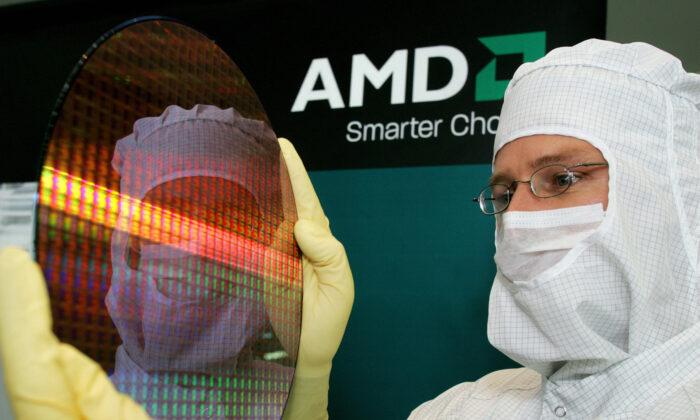PC Market Outlook Remains Cautious
Declines in chief information officer (CIO) spending intentions, rising inventory, and shrinking lead times have rendered the 2022 outlook for the PC market cautious, Morgan Stanley analyst Joseph Moore said in recent a note. The strong secular growth seen in 2021, thanks to the acceleration of digital transformation, may be approaching the end and typical seasonality may be returning, the analyst said.Intel vs. AMD on Revenue Growth
Intel is estimated to record Client Computing Group revenues of $36.3 billion in 2022, representing an 8.7 percent decline, Moore said. The expectation is premised on a slowdown in the PC market heading into 2022 and continued modest market share slippage to AMD, he added.Intel vs. AMD on Product Roadmap
Intel’s Alder Lake desktop chips built on in-house 7 nm process nodes are likely to be fairly competitive with AMD’s higher-end desktop chips, Moore said. Intel, therefore, could regain some lost ground in the near term, he added.The analyst still models a modest share loss to AMD on the client front in 2022. AMD has design win momentum with notebooks, and its 3D V-cache products due in a few months should enable a performance leap, he added.
In servers, Intel’s Sapphire Rapids is scheduled to be launched in mid-2022, Moore noted. Going by the positive comments from customers and partners, the analyst expects Intel to narrow the gap with AMD’s Milan.
Nevertheless, AMD’s substantial market share momentum bodes well for the company, as customers are likely to proceed with Milan deployments with full knowledge of what Intel has in store, the analyst said.
Further, AMD’s Genoa product, its first 5 nm server product, ships in late 2022, he added.
“So while we do see Intel narrowing the gaps, we would anticipate that market share in servers continues to move against them this year,” the analyst said.
Generally, Morgan Stanley sees Intel’s share remaining strong in enterprise-centric businesses, including the enterprise-facing cloud. However, the large internal cloud workloads, which do not support infrastructure-as-a-service business, are increasingly migrating to whatever architecture is optimal for their workloads, the firm said.
The unprecedented scale, the analyst said, will allow an increasingly customized set of solutions. This is leading to broad-based demand for alternative architectures, notably ARM-based, which will also encroach on both Intel and AMD.






Friends Read Free